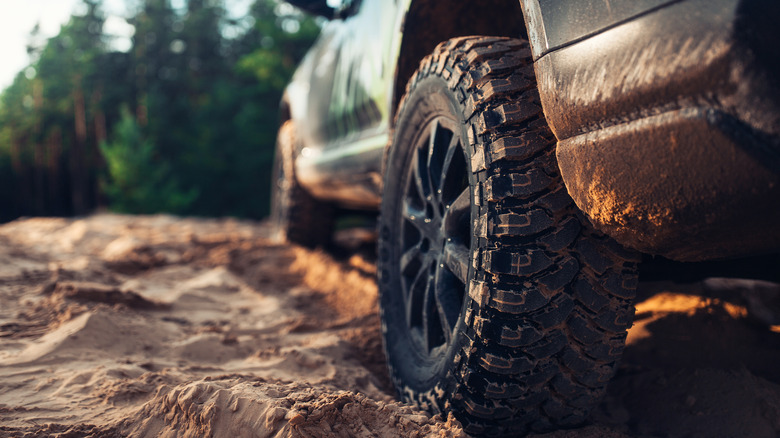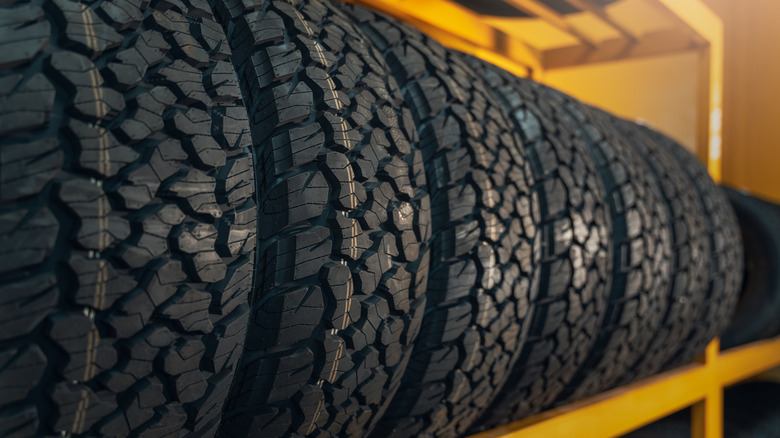What Are Mud-Terrain Tires, And Can You Use Them On The Highway?
Mud-terrain tires are easy to spot as they look aggressive and chunky, and are usually mounted on vehicles that clearly aren't afraid of a little dirt. Their rugged design choice comes to fulfill a specific purpose — these tires are built for serious off-road use. Mud-terrain, or M/T tires are designed to grip onto the kind of surfaces regular tires can't handle — for instance, deep mud, loose soil, jagged rock paths, and more. They use a more aggressive tread design with wide gaps, along with tougher rubber and reinforced sidewalls to survive brutal trails.
While they shine off the road, what happens when the road turns smooth again? Can you use them on the highway? Technically, yes — just like your drift tires are road legal, most M/T tires are good to go on the streets and will get you where you need to go. However, using them for daily highway driving isn't always practical. They can be loud, reduce ride comfort, and wear faster on pavement. So, unless your vehicle spends a good chunk of time off-road, they might not be the most efficient choice for everyday use.
Why they struggle on pavement
The moment you hit the highway, mud-terrain tires start to show their downsides. Because of their design, road noise becomes noticeably louder. The ride itself can feel rough, especially at higher speeds, and handling on dry pavement might feel a bit off when you compare it to standard tires. On top of that, their increased weight and rolling resistance will reduce fuel efficiency.
Mud tires also aren't ideal in cold or wet city conditions. Because mud tires don't have that many sipes in the rubber, they don't grip well in rain, snow, or icy conditions. While they're more expensive upfront, they tend to wear down quicker when driven mostly on pavement, often lasting under 20,000 miles. So, the best option is to keep a second set of tires for daily driving, and reserve the M/Ts for the weekend trails. If you drive off-road often, they're worth it, but if not, you may want to consider an all-terrain or rugged-terrain alternative.
What makes mud-terrain tires so capable off-road?
While mud terrain tires might disappoint on the highways, they are very impressive on rough terrain. They are purpose-built for maintaining traction in extreme environments. As these tires have a large, blocky tread, it helps them dig into soft surfaces like mud and sand without slipping. The wide gaps between the tread blocks help eject debris, rocks, and caked mud while the tire spins, keeping traction consistent. Similarly, on steep climbs or uneven terrain, they offer a level of control and grip that regular or even all-terrain tires simply can't match.
Beyond the tread, their construction plays a huge role. The rubber compounds used in mud tires are typically more resistant to cuts, chips, and trail damage. To top it off, the sidewalls are reinforced to handle sharp rocks, but can also result in a not-so-smooth ride. Some newer models from brands like Bridgestone even come with added tech like 3D tread and side biters for more edge grip. Hence, whether you're heading through desert sand or across a rocky incline, these tires are built to keep moving.


